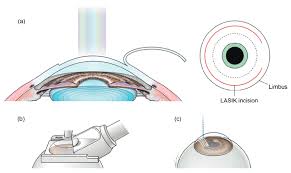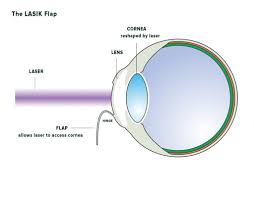Table of Contents
ToggleSMILE Pro is a novel eye surgery that has lately gained popularity. This operation, which corrects nearsightedness and astigmatism, is minimally invasive and bladeless. It is a fast and painless surgery with a short recovery period. Patients frequently question what they need to know before flying after surgery. Traveling may be stressful, but you should take extra care while recovering from surgery. So, Is It Safe to Fly After Smile Pro Eye Surgery? Let’s check!
Getting ready to fly after SMILE eye surgery
If you plan to fly following SMILE eye surgery, prepare beforehand. Most people can fly as soon as 24 hours following the operation, but it’s always wise to check with your doctor to be sure you’re fully healed and ready to fly.
The danger of dry eyes is one of the most significant factors to consider before traveling. Airplanes are notorious for their dry air and low humidity levels, which can aggravate dry eye issues. To avoid this, apply artificial tears regularly and drink enough water before and throughout the journey.
Another significant factor to consider is the possibility of infection. Because there is a danger of infection following any eye surgery, including SMILE, avoiding contacting your eyes with filthy hands or rubbing them excessively is critical. Wear protective glasses during the flight to avoid accidental contact with your eyes.
Finally, bring any essential prescriptions, eye drops, and a doctor’s letter outlining your illness and any necessary treatments in your luggage. This guarantees access to the appropriate medicines and treatments throughout the journey once you arrive at your destination.
How soon after SMILE eye surgery can you fly?
SMILE eye surgery (Small Incision Lenticule Extraction) is a less invasive method gaining acceptance as a viable alternative to LASIK. As with any surgical operation, patients must take some post-operative measures to promote good healing and recovery. One of the patients’ most often asked questions is when they can travel following SMILE eye surgery.
The patient and their recovery process ultimately determine the answer to this question. Before traveling, patients should generally wait at least a week following SMILE eye surgery. This is because fluctuations in air pressure during takeoff and landing can be uncomfortable and harmful to the eye while it recovers.
It should be noted, however, that each patient’s recovery is unique and may be impacted by factors such as the degree of the operation and the individual’s overall health. Before traveling following SMILE eye surgery, patients should always speak with their ophthalmologist.
Tips Following SMILE Eye Surgery- Is It Safe to Fly After Smile Pro Eye Surgery?
You may be concerned about flight safety after receiving SMILE eye surgery. The good news is that you can usually fly right after SMILE surgery. However, you must take certain steps to guarantee a safe and pleasurable journey.
Before traveling, waiting at least 48-72 hours following surgery is critical. Your eyes are still recovering and responding to the changes made during the treatment throughout this period. Flying during this period may cause pain, dryness, and irritation, so avoid it if feasible.
Once you’re ready to fly, you must take a few precautions to safeguard your eyes. Pack any prescription eye drops and apply them regularly during travel. The cabin air might be dry, causing discomfort and eye irritation. Using eye drops keeps your eyes lubricated and comfy.
Wearing eye protection throughout the flight is also recommended. This can be done with sunglasses or customized post-operative eye care glasses. These will shield your eyes from bright lights or UV rays throughout the journey.
Finally, avoiding rubbing your eyes throughout the flight is critical since this might raise the risk of infection or harm to the healing tissue. If you have discomfort or irritation throughout the flight, use your eye drops and seek advice from your doctor.
Following these suggestions, you can ensure a safe and comfortable flight after SMILE eye surgery. Always follow your doctor’s post-operative care instructions and suggestions.
Flight risks and consequences following SMILE eye surgery
If you intend on traveling shortly following SMILE eye surgery, you should be aware of certain potential risks and problems.
Barotrauma, which can develop due to changes in air pressure during takeoff and landing, is one of the most serious dangers. This problem can cause substantial discomfort, agony, and possibly eye injury, especially if you’ve just had SMILE eye surgery. It’s also important to understand that SMILE surgery might create dry eyes, which makes you more prone to eye infections. The dry air in a plane’s cabin can aggravate this condition, producing further irritation and pain.
Another problem following SMILE eye surgery is corneal haze, a foggy film that can grow on the eye’s surface. This can make seeing challenging, especially in a bright, sunny environment like an airplane cabin. It is suggested that you avoid traveling for at least a week following SMILE eye surgery to help lessen the chance of these consequences. You should also avoid touching your eyes and follow the post-operative care recommendations provided by your doctor. If you must fly shortly after surgery, see your doctor about any precautions or steps you may take to lower your risk of problems.
What to do if you get pain when flying after SMILE eye surgery?
Patients with SMILE eye surgery may usually fly by plane without any problems. However, some people may have difficulty when flying following the surgery. It is essential to ease your symptoms if you are experiencing discomfort.
First, remain hydrated throughout your travel to help prevent dryness and eye irritation. You can also use artificial tears or eye drops to keep your eyes lubricated and pleasant. If you are in pain or discomfort, you can use over-the-counter pain relievers like ibuprofen or acetaminophen to help relieve your symptoms. However, before taking any drugs following surgery, please speak with your physician.
It is advised not to touch your eyes since this might cause considerable damage to the corneal flap formed during the SMILE operation. If you must touch your eyes, carefully wash your hands before and after. If your suffering continues or increases, you should seek medical assistance immediately. Your surgeon can assess any problems and provide appropriate treatment and guidance.
Conclusion- Is It Safe to Fly After Smile Pro Eye Surgery?
The treatment of SMILE eye surgery is less invasive for correcting nearsightedness and astigmatism. It entails making a tiny incision in the cornea using a laser. After surgery, most patients may return to work and other activities, including flying, within a few days. If you intend to fly shortly after the surgery, you should know certain potential dangers and consequences. Barotrauma, which can develop due to changes in air pressure during takeoff and landing, is one of the most serious dangers. Dry eyes may result from SMILE surgery, making you more prone to eye infections. The dry air in the cabin might aggravate this issue, creating further irritation and pain.













